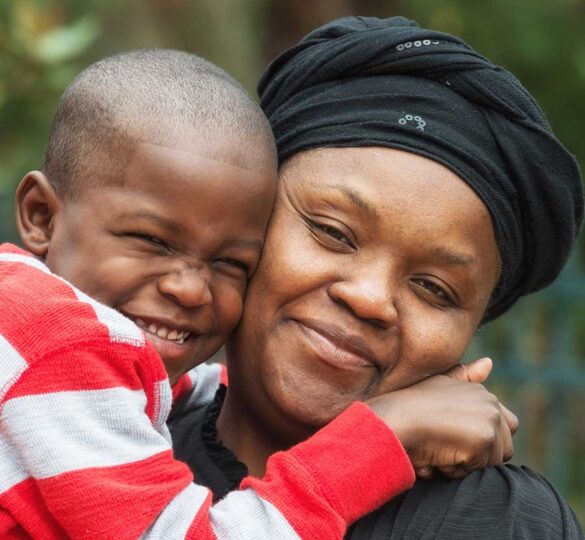African Descent and Glaucoma: Unraveling the Genetics Putting a Community at Higher Risk
Glaucoma occurs about five times more often in African Americans and blindness from glaucoma is about six times more common. In addition to this higher frequency, glaucoma often occurs earlier in life.

The incidence of glaucoma among individuals of African descent is higher than in other populations for open-angle glaucoma (POAG), the most common form of the disease, and for angle-closure glaucoma (ACG). According to the National Institutes of Health, African Americans are five times more likely to develop glaucoma and six times more likely to go blind from glaucoma.
Unfortunately, in African Americans, glaucoma can also occur earlier in life — on average, about 10 years earlier than in other ethnic populations. Additionally, the risk factors for developing glaucoma are greater for African Americans who:
- Are over 40
- Are extremely nearsighted
- Have diabetes
- Suffer from hypertension
- Indulge in prolonged steroid use
Glaucoma — a group of diseases affecting the eye’s optic nerve — often progresses slowly. As a result, many people are unaware they have it because it rarely has any early symptoms. Since African Americans have higher incidence rates and earlier onset of the disease, early detection is especially crucial. Therefore, African Americans are encouraged to get a comprehensive eye exam to check for glaucoma after age 35.
Genetic Factors
Although researchers don’t know all the factors that cause people of African descent to be disproportionately affected by POAG, research indicates specific genetic mutations are associated with a higher risk of developing glaucoma.
For example, a mutation in the myocilin gene is more common in individuals of African descent and is associated with a higher risk of developing POAG.
Another gene common among Africans and African Americans, CDKN2B, has been shown to be responsible for high pressure in the eye. It causes a thickening of the cornea, which increases pressure on the optic nerve and can increase the risk of developing ACG.
Cultural Factors
Cultural factors also contribute to lower rates of regular eye exams and glaucoma diagnosis among African Americans. For example, a study published by the American Academy of Ophthalmology suggests a lack of access to vision care contributes to racial, ethnic, and socioeconomic disparities in visual function among African Americans.
Finding the Cause and Solutions
Individuals of African descent are underrepresented in medical research and face inequalities in access and quality of care. It is vital for individuals of African descent to participate in glaucoma clinical trials — research studies that help to determine the safety and effectiveness of new treatments, particularly those that focus on glaucoma genetics.
By participating in clinical trials, individuals of African descent can help researchers shed light on why they are more susceptible to glaucoma. It will also help improve the treatment options available and help researchers develop new treatments and technologies.
Researchers have conducted several clinical trials to study the incidence rates of glaucoma among people of African descent.
- The African Descent and Glaucoma Evaluation Study (ADAGES), released in 2009, was a five-year study conducted in the United States and the Caribbean to determine the prevalence and risk factors for glaucoma among individuals of African descent. The study found that the prevalence of POAG was 4.3% among individuals of African descent, and ACG was 2.1%.
- Another study called the African Glaucoma Prevention Study (AGPS) focused on assessing the risk factors for developing glaucoma among individuals of African descent and evaluating the effectiveness of different treatment options in this population. The study found that the incidence of glaucoma in individuals of African descent is much higher than in other populations due to several risk factors that are unique to this population, such as increased corneal thickness.
- In 2018, the Primary Open-Angle African American Glaucoma Genetics (POAAGG) study began conducting a genome-wide association study and whole-exome sequencing to identify the genes involved in glaucoma in this population.
Help Us Find a Cure
Participating in clinical trials is one of the most effective ways people of African descent can help address this disparity and advance much-needed research. This support and commitment to participate will significantly impact research efforts to find answers and improve treatments.
The diligent work of researchers continues to lead to a better understanding of glaucoma for all people. As a result, there’s great hope for new and improved treatments, including superior drug delivery methods, laser treatments, and less invasive surgical techniques. While there’s no cure for glaucoma, research continues to bring us closer to finding a cure and restoring vision loss from glaucoma.
Your donations support the efforts of dedicated researchers working to find a cure for glaucoma. Every contribution helps bring us closer to finding a cure for glaucoma. You can help make it happen!
Posted February 6, 2023. This article was reviewed for medical accuracy by Reena A. Garg, MD.

Reena A. Garg, MD
Reena A. Garg, MD specializes in the medical, laser, and surgical treatment of glaucoma and cataract at Visionary Eye Doctors in Rockville, MD. She also serves as the Ophthalmology Residency Program Director at Georgetown University.